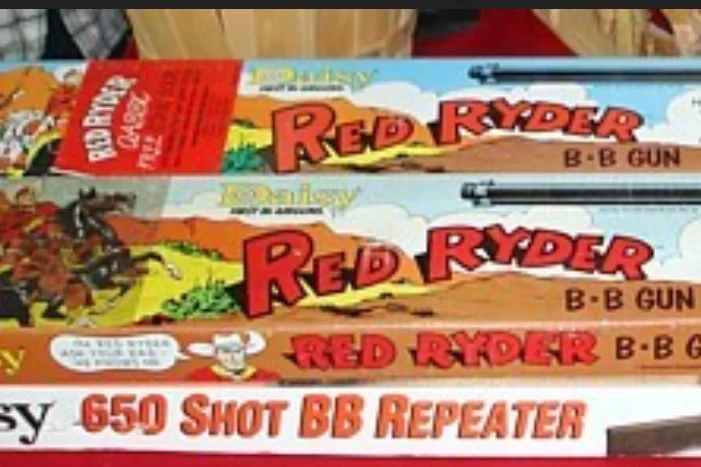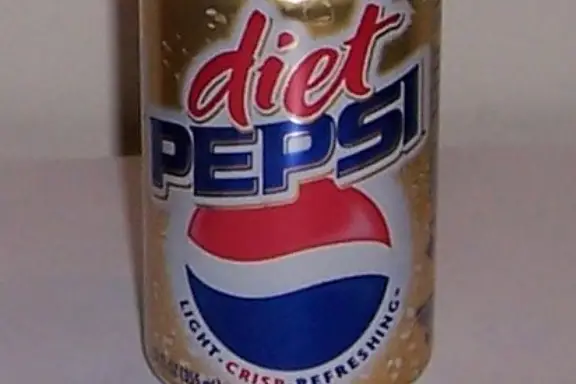1. Cigarette Ads Featuring Doctors

Back in the ’70s, you could actually find ads where doctors in lab coats were shown smoking cigarettes and recommending certain brands. The message was clear: if a doctor trusted it, then it must be safe. Today, it’s hard to imagine anything more irresponsible, considering what we know about the dangers of smoking. These ads gave people permission to keep puffing away without guilt.
The marketing played heavily on authority and trust, showing health professionals smiling with a cigarette in hand. What’s shocking is how normal it seemed at the time. Fast forward to now, and not only are cigarette ads banned from TV, but linking them to medicine or doctors would cause outrage. It’s a bizarre reminder of how quickly public opinion and health standards can shift.
2. Children Promoting Alcohol

Some ads from the ’70s featured kids in commercials for alcohol, usually beer or wine. They weren’t drinking it themselves, but they were often shown laughing with adults, carrying bottles, or watching happily as their parents enjoyed a drink. At the time, it was supposed to be cute and family-oriented.
Nowadays, this would be considered incredibly irresponsible and harmful. Regulations are strict about not even hinting that alcohol is for underage audiences. But back then, the idea of showing kids near beer bottles didn’t raise an eyebrow. It just goes to show how advertising boundaries have dramatically changed.
3. Gender-Stereotyped Cleaning Products

Many cleaning product ads in the ’70s leaned heavily on gender roles, with women portrayed as homemakers whose only joy came from keeping a spotless house. The ads often showed a woman fretting over a stain or mess until a miracle product saved the day. Then she’d beam with happiness, while her husband or kids looked on approvingly.
Watching these ads now feels more cringeworthy than anything else. Women were almost always shown in aprons, while men were rarely involved in household chores. Today, the blatant message that women belong in the kitchen would not pass. Brands have since made an effort to show cleaning as a shared responsibility, but those old commercials are still jarring to revisit.
4. Airline “Stewardess” Campaigns

Airline ads in the ’70s often marketed their flight attendants as part of the appeal. They highlighted “attractive stewardesses” in skimpy uniforms and suggested that flying was as much about eye candy as the destination. The campaigns were catchy, but undeniably objectifying.
Today, that type of ad would never be allowed. Not only has the industry worked to respect and value flight attendants as professionals, but advertising rules are much stricter. Looking back, the old ads feel more like nightclub promotions than airline campaigns. They’re a strange mix of glamour and sexism that really hasn’t aged well.
5. Candy Cigarettes for Kids

Candy cigarettes were marketed to kids throughout the ’70s with packaging that looked almost identical to real brands. Ads encouraged children to mimic adults by holding the candy just like a real cigarette. Parents didn’t think much of it at the time, since it was just candy.
But looking back, it’s unsettling to see how normal it was to introduce children to smoking culture. These products planted the idea that cigarettes were “cool.” Today, candy cigarettes have all but disappeared, and promoting them in ads would stir outrage. They’re a striking example of how advertising blurred dangerous lines back then.
6. Fast Food “Supersize” Ads

In the ’70s, fast food chains proudly advertised massive portion sizes, with commercials showing customers tackling burgers bigger than their heads. The ads celebrated excess, encouraging people to eat more for less. It was positioned as a good deal and a fun experience.
Today, with health concerns and obesity awareness, that type of marketing feels tone-deaf. Supersizing has since been phased out in many places, and ads now highlight “healthier” options. The sheer pride these old commercials took in overindulgence feels almost shocking. It was a completely different way of thinking about food.
7. Diet Pills Marketed as Glamorous

Ads for diet pills in the ’70s often showed slim, glamorous women claiming their figure was thanks to a “simple pill.” The commercials made it seem like all you had to do was swallow one and you’d be ready for the runway. No mention of side effects or safety ever came up.
Today, this kind of marketing would be torn apart for being misleading and dangerous. Diet culture was rampant, and products were barely regulated. Seeing these glossy, misleading ads now is a stark reminder of how vulnerable consumers were to harmful messaging.
8. Perfume Commercials with Over-the-Top Seduction

Perfume ads in the ’70s often leaned heavily on sexuality, with women draped across furniture and men obsessively drawn to them after a single spray. They were dramatic, sultry, and sometimes borderline absurd. It was all about selling the fantasy rather than the fragrance.
Looking back, they feel campy at best and inappropriate at worst. Today’s perfume ads are still glamorous, but much more careful about avoiding overtly predatory tones. The vintage ones almost feel like parody when viewed through a modern lens.
9. Toy Guns in Bright Commercials

In the ’70s, toy gun ads were everywhere, with commercials showing kids gleefully playing war in the backyard. They were marketed as “realistic” and often looked very similar to actual firearms. Parents thought nothing of it at the time.
Today, advertising toy guns like that would be a major controversy. Concerns about violence and gun safety mean that realistic toy weapons are rarely promoted so openly. Those old commercials feel shockingly out of step with modern sensitivities.
10. Beer Ads Suggesting It Made You Popular

Many beer commercials in the ’70s promised not just refreshment, but instant popularity. Groups of friends would gather, and suddenly everyone was happy, laughing, and dancing—thanks to a specific brand of beer. The message was that drinking it would make you more fun and desirable.
These days, alcohol ads face strict regulations. They can’t imply that drinking makes you more attractive or successful. The old ones went all in on that fantasy, making them both entertaining and unbelievable when viewed now.
11. Soda Ads With Excessive Sugar Bragging

Soft drink ads in the ’70s proudly promoted how sweet and sugary their products were. Commercials showed kids bouncing around with energy, as though sugar was the ultimate fuel. It was framed as something fun and necessary for a good time.
Nowadays, sugar content is more often hidden than celebrated. Soda ads emphasize taste and lifestyle instead of outright bragging about sugar. Those vintage commercials almost feel like they were encouraging cavities, which makes them both funny and unsettling today.
12. Household Appliance “Gifts for Her” Ads

It wasn’t unusual in the ’70s to see ads suggesting you buy your wife a vacuum or blender for her birthday. The commercials positioned these items as thoughtful, even romantic gifts. They reinforced the idea that a woman’s happiness revolved around her household duties.
Today, that would spark backlash immediately. Appliances are still advertised, of course, but rarely as “the perfect gift for her.” Watching these old ads now feels like stepping into a time warp of outdated values.
13. Car Commercials Emphasizing Speed Recklessly

Car ads in the ’70s often focused on how fast a vehicle could go, showing drivers zooming down highways or taking sharp corners at top speed. The thrill was the selling point, with little mention of safety. It was all about raw power.
In modern advertising, safety features are just as important as performance. Speed is no longer marketed so recklessly, especially with awareness around accidents and road safety. Those old commercials almost glamorized danger, which makes them feel bizarre by today’s standards.
14. Cigarette Ads With Cartoons

In an effort to seem fun and lighthearted, some cigarette brands used cartoon mascots in their ads during the ’70s. They looked almost like something from a Saturday morning cartoon, except they were promoting a very adult product. At the time, it seemed harmless.
Today, the idea of marketing cigarettes with cartoon characters is unthinkable. It would be seen as deliberately targeting children. Those old ads stand as one of the clearest examples of advertising gone too far.
15. Airline Ads Promising Unlimited Booze

Back in the ’70s, flying was often portrayed as a glamorous party in the sky. Some airlines even ran ads bragging about how much alcohol you could drink during your flight, with passengers clinking glasses nonstop. It was sold as part of the luxury experience.
Today, alcohol is still served on flights, but the idea of advertising unlimited drinking would never fly. With stricter rules and awareness about overconsumption, those ads feel completely over the top. They capture a version of air travel that doesn’t exist anymore.
16. Diet Soda Ads Promoting It as a “Beauty Secret”

Diet sodas in the ’70s weren’t just marketed as low-calorie, they were positioned as beauty aids. Ads suggested that drinking them would keep you slim, stylish, and attractive. They often featured models in fashionable outfits sipping from a can.
Now, diet sodas are under scrutiny for artificial sweeteners and health concerns. Advertising them as glamorous or tied to beauty would be considered misleading. The vintage ads seem almost laughably shallow by today’s standards.
17. Meat Ads Touting Giant Portions

Food ads in the ’70s often celebrated huge servings of meat, like steaks that barely fit on the plate or hot dogs stacked sky-high. The message was that bigger was always better. It was a symbol of abundance and indulgence.
In today’s world, where moderation and plant-based options are part of the conversation, these ads feel out of touch. Bragging about sheer quantity doesn’t work the same way it once did. They’re a window into a different cultural mindset about food and health.


